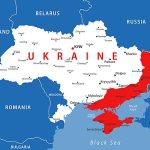
Colleen Hroncich
In recent years, there has been an explosion of school choice programs that enable parents to use state education dollars for learning options beyond the local district school. Education savings accounts (ESAs) have become particularly popular for the flexibility they provide: parents can use the funds for a variety of education options like tuition, tutoring, curriculum, and services for children with special needs. It seems like homeschoolers would be prime beneficiaries of ESAs since they often tap into multiple resources to educate their children.
While some homeschoolers support ESAs, more traditional homeschoolers and homeschool groups often fight these programs because they want to avoid government entanglement. In the 1960s and 1970s, parents had to wage legal and legislative battles to secure the right to homeschool their children. Homeschoolers who know this history often want to remain completely separate from the government. These traditional homeschool groups are politically active and will fight against programs that they think will encroach on homeschool freedoms.
As my new Cato Briefing Paper, School Choice Programs Need a Firewall for Homeschoolers, explains, there is a solution that can satisfy both groups. ESA programs can be written to exclude students who are officially registered as homeschoolers while creating a separate category for students who use an ESA for home‐based education. Because each state’s education laws are different, there isn’t a cut‐and‐paste solution. But by looking at the compulsory education requirements and homeschool provisions in a particular state, policymakers can craft language that will work.
As school choice programs continue to expand and spread, it’s important for homeschoolers to be engaged and for policymakers to listen to their concerns. With careful design, education savings accounts can help new families begin their home education journey while protecting those who want to stay independent of the government.






